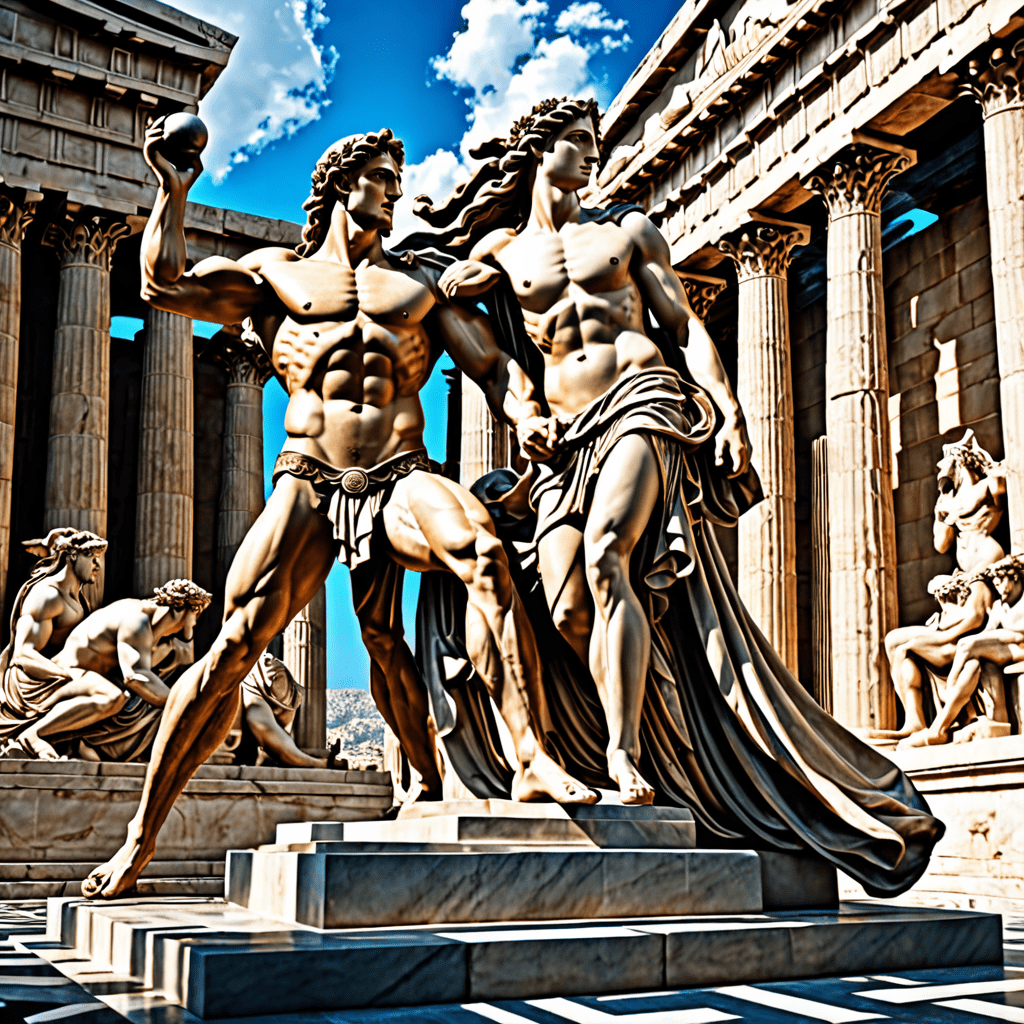The Mythical Aspects of Transformation in Hindu Mythology
## Introduction
Hindu mythology is a treasure trove of transformative stories where gods, goddesses, and other divine beings undergo profound changes in their forms and identities. These transformations hold profound meanings, often reflecting the cyclical nature of existence, the power of devotion, and the triumph of good over evil.
The Concept of Avatarana and the Divine Incarnations
One of the central concepts in Hindu mythology is avatarana, which refers to the descent of a god into a physical form on Earth. Avatars are incarnations of Vishnu, the supreme deity who maintains cosmic balance. Vishnu's most famous avatars include Rama, the warrior prince of Ayodhya, and Krishna, the enigmatic and multifaceted divine being. These avatars often appear during times of crisis or chaos to restore dharma, the righteous order of the universe.
The Mythical Transformations of Vishnu
Vishnu himself is a master of transformation. He is often depicted in multiple forms, appearing as Trivikrama, the cosmic giant, or Mohini, the seductive enchantress. These transformations demonstrate Vishnu's unparalleled power to assume any shape or form to accomplish his divine purposes. He possesses the ability to alter his appearance at will, disguising himself as a human, an animal, or even an inanimate object. Vishnu's transformations are a testament to his omnipotence and the fluidity of his divine nature.
The Transformation of Shiva as Bhairava
Shiva, the god of destruction and transformation, is renowned for his terrifying aspect as Bhairava. Bhairava is often depicted with fangs, a necklace of skulls, and a third eye on his forehead. He represents the untamed and unpredictable forces of nature, as well as the power of destruction that ultimately leads to renewal. Bhairava's transformations symbolize the transformative nature of Shiva himself, who can both create and destroy, and who embodies both the benevolent and malevolent aspects of the divine.
The Shapeshifting Abilities of Brahma
Brahma, the creator god, is another divine being with shapeshifting abilities. He is often depicted with four heads, representing the four directions of the compass and the totality of knowledge. Brahma can assume different forms to fulfill his creative purposes, such as a swan or a lotus flower. His transformations reflect the boundless creativity and transformative power of the divine, which can bring forth new worlds and beings into existence.
The Mythological Transformations of Kali
Kali, the goddess of destruction and time, is one of the most powerful and feared deities in the Hindu pantheon. She is often depicted as a dark-skinned woman with a lolling tongue and a garland of severed heads. Kali's transformations symbolize her role as the destroyer of evil and the bringer of change. She is the embodiment of the transformative power of time, which can devour all things and bring about both destruction and renewal.
The Symbolic and Metaphorical Transformations of Hanuman
Hanuman, the monkey god, is a loyal devotee of Rama and a symbol of strength, courage, and perseverance. He possesses the ability to change his size and shape at will, often transforming into a giant or a miniature form. Hanuman's transformations represent the power of devotion and the ability to overcome obstacles through determination and resilience. He is also a symbol of the transformative power of the mind, which can achieve great things when it is focused and determined.
The Shapeshifting Deities in the Ramayana and Mahabharata
The Ramayana and Mahabharata, two of the most important epic poems in Hindu mythology, are filled with stories of shapeshifting deities. These deities use their powers to disguise themselves, gain access to different realms, and accomplish their divine missions. The ability to transform one's appearance is often seen as a sign of divine power and the ability to transcend the limitations of the physical world.
The Relevance of Transformations in Hindu Philosophy
The concept of transformation is deeply interwoven with Hindu philosophy and spirituality. The transformation of the self, from ignorance to enlightenment, is a central theme in many Hindu texts. This transformation can be achieved through spiritual practices such as yoga, meditation, and devotion. Hindu philosophy emphasizes the cyclical nature of existence, where everything is constantly changing and transforming. By embracing the transformative nature of reality, individuals can transcend the limitations of their physical and mental existence and attain a higher state of being.
Conclusion
The mythical aspects of transformation in Hindu mythology provide a rich tapestry of stories and symbolism that explore the profound power of change and the transformative nature of reality. Through the transformations of gods, goddesses, and other divine beings, Hindu mythology teaches us about the importance of embracing change, overcoming obstacles, and striving for self-realization. The transformative power of the divine is a reminder that even in the face of destruction and adversity, there is always the potential for renewal and rebirth.
FAQ
What is the significance of avatarana in Hindu mythology?
- Avatarana refers to the descent of a god into a physical form on Earth, often to restore dharma and protect the universe from evil.
Who are some of the most famous avatars of Vishnu?
- Vishnu's most famous avatars include Rama, the warrior prince, and Krishna, the enigmatic divine being.
What is the significance of Shiva's transformation into Bhairava?
Shiva's transformation into Bhairava represents his role as the destroyer of evil and the bringer of renewal.
What is the significance of Kali's transformations?
- Kali's transformations symbolize her role as the goddess of destruction and time, who devours all things and brings about both destruction and renewal.
What is the significance of Hanuman's shapeshifting abilities?
- Hanuman's shapeshifting abilities symbolize his strength, courage, and resilience, as well as the power of devotion and determination.



